
Violent crime statistics - Canada
Click here for a fact sheet on violent crime in Canada
The crime rate went down slightly in 2009, however, Statistics Canada reported that the lower rate was largely driven by declines in three areas of property crime; vehicle theft, mischief and break-ins. John Turner, chief of Statscan's policing services program said that, "Most of the drops we've seen over the last decade have been in non-violent crimes." (Source: Canada's crime rate continues to drop, Globe and Mail, July 21, 2021) Serious assaults, as illustrated in the chart below, have gone up steadily since 1983, with slight decreases in the last couple of years.
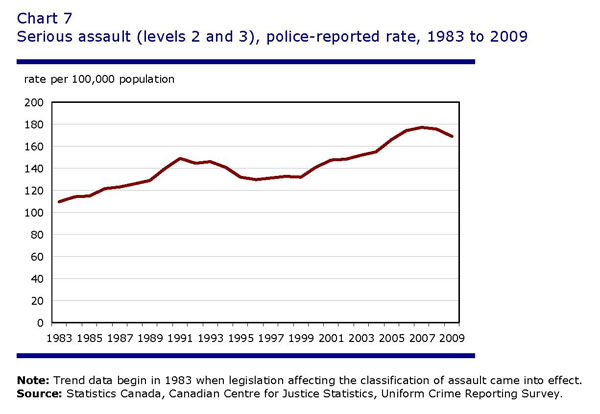
According to the Canadian Council on Social Development, "The overall crime rate in Canada rose steadily from 1960 to 1990, it peaked in 1990/91, then started dropping throughout the 1990s. These fluctuations are attributed in part to the "baby-boom" and "baby-boom echo", where the proportion of Canadians between the ages of 15 and 25 was very high for many years before it dropped sharply -- by 18% -- in 1991. Despite decreases in both the proportion of teens aged 15 to 19 and crime rates in the 1990s, overall rates of violent crime are still three times higher than they were in the 1960s, and rates of property crime are twice as high." (Canadian Council on Social Development, Crime Prevention Through Social Development)
A report on youth crime released by the Canadian Centre for Justice Statistics in May 2008 (for 2006) stated that while overall crime rates have dropped, youth violent crimes have increased 30 per cent since 1991. Violent crime has risen 12 per cent in the last ten years among youths, while the overall violent crime rate in Canada declined 4 per cent in the same time period.
Youth homicide rates have risen 41 per cent since 1997, one of the largest increases in the last ten years, a trend that Dr. Nick Bala, a youth justice expert at Queens University, calls "worrisome", something of an understatement. (Source: May 17, 2008, Globe and Mail)
In Crime Statistics in Canada, 2007, Juristat, Canadian Centre for Justice Statistics, the chart below appears. It shows that youth violent crime has doubled since 1987. It appears to be the blending of property and violent crime statistics that results in the the "decreases" in youth crime reported by some.
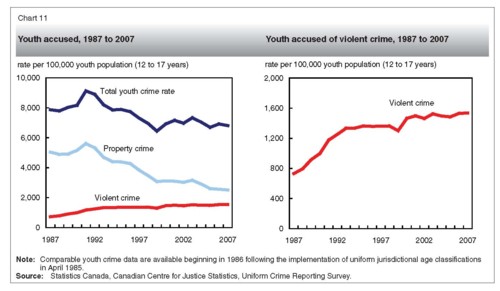
Click here for a fact sheet on violent crime in Canada
In 2006, the overall violent crime rate remained unchanged, mainly due to the relative stability in the rate of minor assaults. However, other than a drop in homicides, most other serious violent crimes were on the rise, similar to 2005. The decline in homicides in 2006 was partially offset by an increase in attempted murders.
Aggravated assaults, the most serious form of assault, also increased for the 2nd year in a row, up 5%. Assault with a weapon or causing bodily harm continued its upward trend, increasing for the 7th straight year, up 4%. This resulted in the highest rate for this offence since it was introduced into the Criminal Code in 1983. (Source: Crime Statistics in Canada, 2006 - Juristat - Canadian Centre for Justice Statistics, Vol. 27, no. 5)
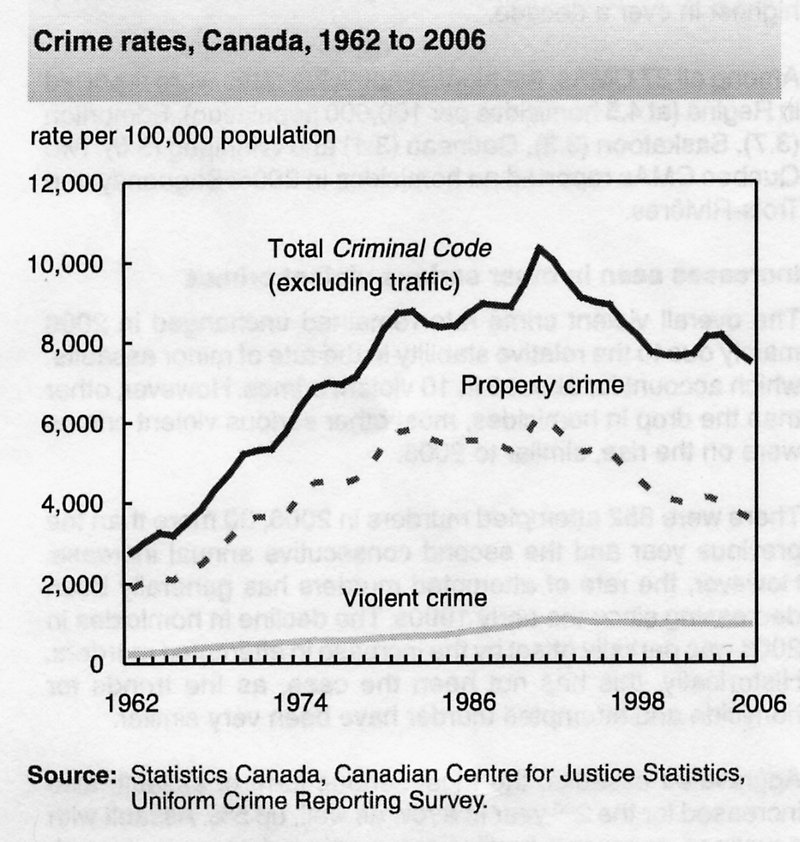
Property crime rate (per 100K) change from 1962-2006: 1891 to 3588 or a 90% increase
Violent crime rate (per 100K) change from 1962-2006: 221 to 951 or a 300%+ increase
In 2005, the overall crime rate dropped 5%, but this was driven by declines in non-violent crimes. Decreases were seen in most crimes, with the exception of the serious crimes of homicide, attempted murder, assault with a weapon, aggravated assault and robbery.
After increasing 13% in 2004, the homicide rate increased by 4% in 2005. The 2005 homicide rate, 2.0 per 100,000 population, was the highest since 1996. Attempted murders were also on the rise, up 14% from the previous year. There were 772 attempted murders in 2005, 101 more than the previous year. (Source: Crime Statistics in Canada, 2005 - Juristat - Canadian Centre for Justice Statistics, Vol. 26, no. 4)
Click here for a fact sheet on violent crime in Canada
The text accompanying this chart from Crime Statistics in Canada, 2001 states, "The violent crime rate is 6% less than a decade ago, but 52% higher than 20 years ago."
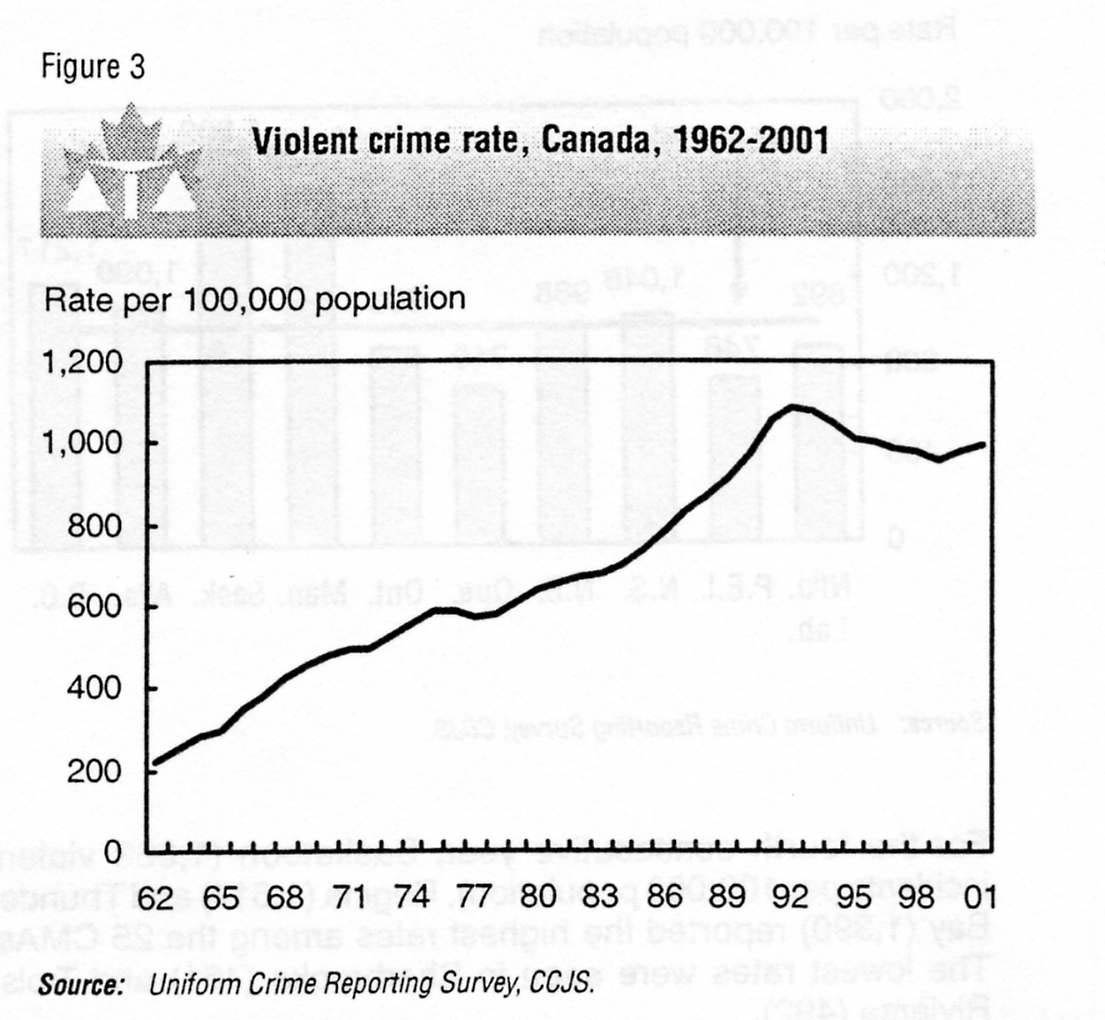
FIGURE 3 SOURCE: Crime Statistics in Canada, 2001, Juristat, Canadian Centre for Justice Statistics, Statistics Canada - Catalogue no. 85-002-XPE Vol. 22 no. 6
The text accompanying the chart below from Crime Statistics in Canada, 2003 says, "The 2003 violent crime rate was 11% lower than its near-peak in 1993, but still 66% higher than 25 years ago."
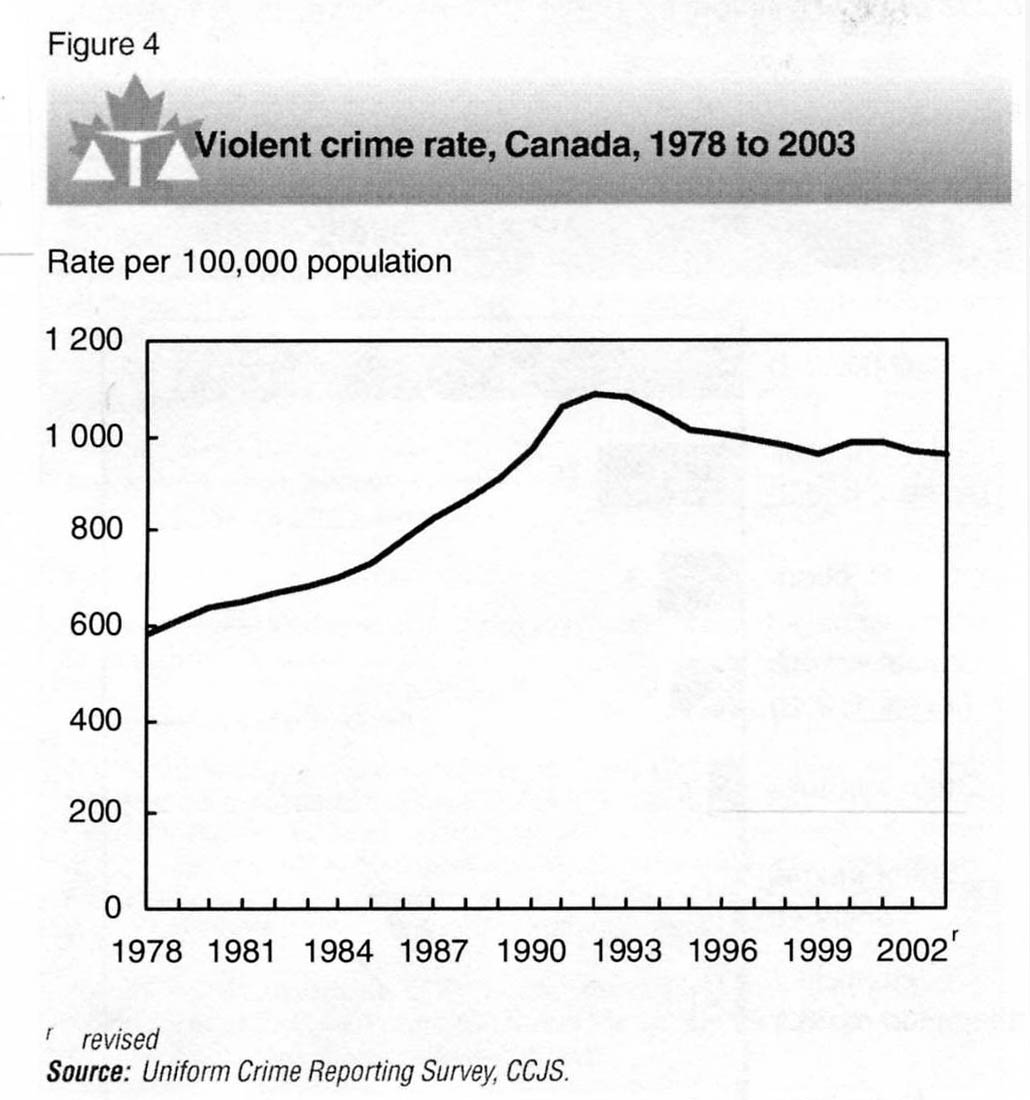
FIGURE 4 SOURCE: Crime Statistics in Canada, 2003, Juristat, Canadian Centre for Justice Statistics, Statistics Canada - Catalogue no. 85-002-XPE, Vol. 24, no. 6
According to the Canadian Council on Social Development, "The overall crime rate in Canada rose steadily from 1960 to 1990, it peaked in 1990/91, then started dropping throughout the 1990s. These fluctuations are attributed in part to the "baby-boom" and "baby-boom echo", where the proportion of Canadians between the ages of 15 and 25 was very high for many years before it dropped sharply -- by 18% -- in 1991. Despite decreases in both the proportion of teens aged 15 to 19 and crime rates in the 1990s, overall rates of violent crime are still three times higher than they were in the 1960s, and rates of property crime are twice as high." (Canadian Council on Social Development, Crime Prevention Through Social Development)
Click here for a fact sheet on violent crime in Canada
Violent youth crime
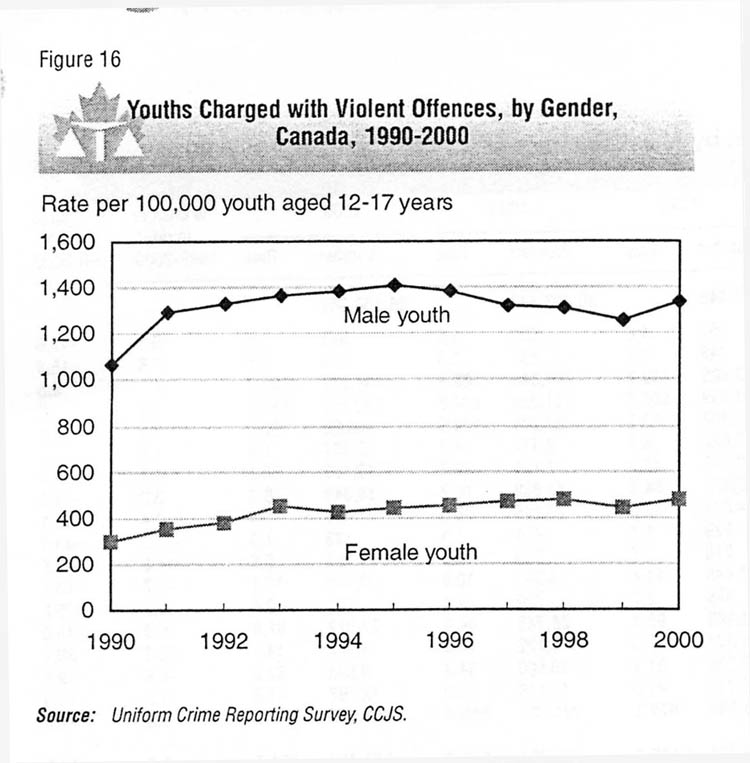
FIGURE 16 SOURCE: Crime Statistics in Canada, 2000, Juristat, Canadian Centre for Justice Statistics, Statistics Canada - Catalogue no. 85-002-XPE, Vol. 21, no. 8
In the Statistics Canada report, Children and Youth in Canada, the following information on youth violent crime is provided:
"In 1999, violent crimes accounted for one in five youths charged with a Criminal Code offence. The rate of youths charged with violent crimes began to fall only recently, with a 2% drop in 1997, a 1% decrease in 1998, and a 5% drop in 1999. Despite these declines, the 1999 youth violent crime rate remained 41% higher than it was a decade earlier." (Emphasis added)
In Crime Statistics in Canada, 2003, Statistics Canada notes: "Throughout the past decade, the trend in the rate of youth violent crime was relatively stable until it began a general increase in 2000 (Figure 17).
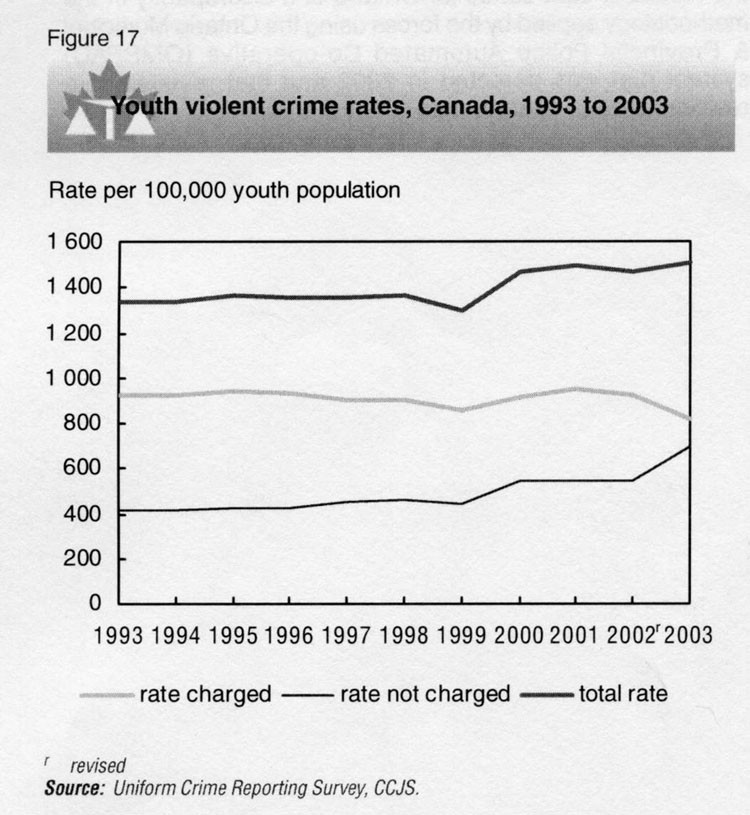
FIGURE 17 SOURCE: Crime Statistics in Canada, 2003, Juristat, Canadian Centre for Justice Statistics, Statistics Canada - Catalogue no. 85-002-XPE, Vol. 24, no. 6
In a December 2004 article on youth crime, the Toronto Sun reported the following: "While the number of all crime cases heard in Canadian youth court has dropped 20% over the last decade, violent crimes cases -- for homicide, sexual assault, assault and robbery -- have jumped 25% over the same period, reports Statistics Canada.
"Separate stats from the Canadian Centre for Justice Statistics (CCJS) show an increase of 13% in the youth violent crime rate between 1993-2003, with a significant jump in 2000 after a decade of relative stability." The complete article follows along with additional items.
Violent youth crime rising
Stats reveal gangs and girls now figure more often in incidents
December 12, 2020
By Brodie Fenlon
Toronto Sun
REALITY CHECK: Is youth violence getting worse or does it just seem that way after two weeks of highly publicized teen crime in Toronto? The answer -- from cops to victims to social agencies to the statistics -- is yes, the streets are meaner for our kids.
Teen violence is more intense, escalates far faster and involves groups, girls and weapons more than ever before, experts say.
"The severity of what is happening is definitely on the rise," says Sally Spencer, executive director of Youth Assisting Youth, a peer-mentoring program for at-risk youth in Toronto and York Region.
From fists to knives
"Before, you'd have a school fight with your fists. Now, forget that. Now, you start with the knives and go to the guns."
While the number of all crime cases heard in Canadian youth court has dropped 20% over the last decade, violent crimes cases -- for homicide, sexual assault, assault and robbery -- have jumped 25% over the same period, reports Statistics Canada.
Separate stats from the Canadian Centre for Justice Statistics (CCJS) show an increase of 13% in the youth violent crime rate between 1993-2003, with a significant jump in 2000 after a decade of relative stability. In Toronto, arrests of young people aged 12-17 for violent crimes has remained stable since 1999, even dropping by about 200 arrests since they peaked in 2000.
But Stu Auty, president of the Canadian Safe School Network, says that when you take a longer view over several decades, the upward trend in youth violence is unmistakable.
"This is brand spanking new," he says. "When you look at stats compared to 25 years ago, you didn't even find on the charts any of this kind of crime, where kids are stabbed openly on a street corner. It's outrageous."
A straight comparison of the youth violent crime rate in Canada over 25 years shows an increase of several hundred per cent, but it's a statistically inaccurate picture due to major changes in the law and the way police and courts have handled youth over that time, says Marnie Wallace of the CCJS.
'Tip of the iceberg'
"A decade is about as far back as you want to look," she says.
Either way, the numbers offer only a glimpse at the "tip of the iceberg" because stats are only collected after police become involved, cautions Staff Sgt. Dave Saunders, head of Youth Programs for the Toronto Police.
"Youth are very uncomfortable reporting crime," he says. "There are many victims who are suffering in silence."
Saunders says there are three distinct trends in Toronto:
- The growth of gang-type or group violence, as was the case with Drew Stewart, 16, who was swarmed by a group of teens and fatally stabbed Dec. 3.
- The rapid escalation to weapons in conflicts, as happened Nov. 28 when Tamara Carter, 11, and an unnamed 23-year-old man were shot on a TTC bus after an argument.
- An increase in female violence.
More difficult to answer is why youth violence is intensifying.
The theories could fill a newspaper: Family breakdown and poor parenting, poverty, violence in the home, the Internet, the decline of religion and morality, video games, the proliferation of guns, lenient laws and weak sentences, a lack of discipline in schools, and on and on.
Joe Wamback, whose son Jonathan was beaten to within inches of his life by a group of Newmarket teens in 1999, says he's fed up with all the excuses for the behaviour of "psychopathic individuals."
"These scumbags make a conscious decision and we need to hold them accountable," Wamback says.
Still, most experts agree our youth are "soaked" in violence from their earliest years in a society that embraces the use of aggression to solve problems.
"Kids are fed a steady diet of aggression in all forms of popular culture," says Dr. Fred Mathews, psychologist and director of research at Central Toronto Youth Services.
'Scripts' for violence
"If you need scripts to teach you how to act out violently, they're everywhere."
Mathews notes that many perpetrators of violence have been victims first, often of abuse, violence or neglect in their home.
There's much work being done. In Toronto, Mayor David Miller's community safety plan -- passed by council in March -- has led to the creation of a secretariat to co-ordinate anti-crime work and an advisory panel headed by Ontario Chief Justice Roy McMurtry.
Their work has focused on engaging youth in four neighbourhoods: Malvern, Jamestown, Jane and Finch, and the Kingston-Galloway area.
Toronto Police run a number of outreach and school programs, including the Empowered Student Partnerships program, which challenges high school students to address local problems by coming up with their own campaigns.
And there are programs like Youth Assisting Youth, which for 28 years has been pairing at-risk youth with young mentors to effect change "one kid at a time."
But ultimately, Mathews says, we must begin by looking in the mirror.
"Our children and youth can never be any healthier than the adults around them," he says.
Murder rate lowest since '67
September 30, 2021
Toronto Sun
By Kathleen Harris
CANADA'S MURDER rate has dipped to its lowest level since 1967, falling by 7% to 1.73 victims per 100,000 population. Statistics Canada figures released yesterday count 548 homicide victims in 2003 -- with 50 fewer women killed than a year earlier.
Ontario's murder toll was static at 178.
Steve Sullivan, president of the Canadian Resource Centre for Victims of Crime, welcomed the overall decline but raised alarms about the soaring volume of unsolved murders (141) and the hike in homicides committed by youth.
Gun control measures
Last year, 57 kids aged 12-17 were accused of murder -- 15 more than the year before.
Sullivan credited a healthy economy and national gun control measures for helping drive down homicide rates.
"Opponents of the registry always say criminals don't use rifles and shotguns, but we know people who kill in their own home do," he said. "I think the fact those numbers are down is encouraging."
While guns remain the murder weapon of choice in Canada, the use of rifles and shotguns is down by half -- from 40% to 20% -- over the past decade.
Alex Swann, spokesman for Public Safety Minister Anne McLellan, said the positive pattern shows the federal gun registry is working.
Boondoggle
But Conservative MP Garry Breitkreuz balked at a suggested link between gun registry and lower murder rates, insisting it's a weak attempt to justify a $1-billion boondoggle.
The StatsCan report also found most homicides were committed by someone the victim knew, with crimes committed by strangers hitting a 25-year low. While 64 men killed their wives, only 14 women killed their husbands.
One in seven homicides was related to organized crime or street gangs.
Viciousness of youth attacks increases while numbers remain static
December 7, 2020
Canadian Press
By Emily Yearwood-Lee
VANCOUVER (CP) - The memories came rushing back for Len Libin with the news of a fatal attack on a Grade 11 student walking home from a game of pickup basketball last week.
Three years ago, Libin's son, then a 17-year-old athlete and bright student, was beaten into a coma in a random attack by two teenagers and an adult.
The victims of such attacks, says the senior Libin, "so often seem to be just good kids that you hear about that haven't really created problems and just for some reason, I don't know why, are picked."
Joel Libin survived and, despite having to go through extensive rehabilitation, has done "remarkably well," says his father.
The 17-year-old killed last week was not so fortunate.
He was buried Friday, a week after he and three Filipino friends walked past a group of Indo-Canadian teenagers who allegedly called out racial slurs.
There was a chase and the victim, apparently the slowest in the group, was caught and beaten with a blunt object. He died hours later in hospital.
The sheer viciousness of seemingly random attacks by teenagers seems to be increasing, say youth crime experts, although they maintain the actual number of youth murders has remained static.
"What strikes me as a researcher is what I say is an apparent increase in the brutality," says Ray Corrado, a criminologist at Simon Fraser University.
Sibylle Artz, an expert in youth violence at the University of Victoria, agrees.
"That seems to be a consensus among many people who deal with the youth directly," she says.
"They all tell the same story, that they have this experience of this being more brutal, more extreme," says Artz.
"When an attack is perpetrated, it doesn't stop when somebody's down."
The Vancouver teen's death comes on the heals of a Toronto 12-year-old's slaying, allegedly by three teenagers, who were charged with first-degree murder. The victim's brother is one of the accused.
In another high-profile case, three Alberta teenagers were sentenced last month to spend 60 days in custody for spiking a slushie with a toxic chemical and serving it to a fellow student.
The motive appears to have been a dislike for the victim, whom the girls suspected of hacking into one of their computers and erasing the hard drive.
Stranger killings are far more rare, says Corrado. Police aren't aware of any prior relationship between the Vancouver victim and his alleged attackers.
One of the more controversial aspects of the Filipino youth's killing is the suggestion that race was a contributing factor.
Police have hesitated to say the attack was racially motivated, although they acknowledge racial taunts were called out by members of the Indo-Canadian group before Filipino teenager and his friends were chased.
The principal of the victim's school said last week she didn't view the attack as a racial incident.
"I think it was a violent incident," said Jennifer Palmer of Charles Tupper secondary school. "I think the people who perpetrated it may have behaved that way to any group of kids walking down the street."
In a narrow sense, the killing may have been racially motivated, says Corrado.
"The larger question is, would it have happened with another group of young people there that were even (Indo-Canadian)," he says, suggesting the answer would be "yes."
"The violence is what they are looking for; the particular target, they are not."
Regardless of motivation, Corrado and Artz said the number of youth killings in Canada has stayed at roughly the same level - 40 to 50 a year - for the last few decades.
"While the acts are horrific, there is very little indication that youth murder has gone up," says Corrado.
"Canada's youth are still quantitatively relatively non-violent, definitely compared to the United States," he says. "We're not a society where we need to be in constant fear of young people."
The criminologist could only speculate when asked for an explanation as to why brutality of random acts seems to be increasing.
"I've argued it might reflect the cultural norms of the last 15, 20 years, where video games and movies and music, even television, portray a level of violence that is really extraordinary," says Corrado.
Artz agrees. "I believe that having the imagery constantly in front of them, (communicating) that it's fine to use weapons, clubs, action-hero type behaviours.
"We are normalizing the use of violence in our efforts to sell goods."